Naval Group is a major French industrial group specializing in naval defense design, development and construction. Its headquarters are located in Paris.

The La Fayette class is a class of general purpose frigates built by DCNS in the 1980s and 90s, operated by the French Navy and three other navies. Derivatives of the type are in service in the navies of Saudi Arabia, Singapore, and Taiwan.

The Georges Leygues class was a class of anti-submarine destroyers of the French Navy. They were multi-role ships due to their Exocet and Crotale missile armament, making them especially suitable for the defence of strategic positions, show of force operations, or as high seas escorts. The design was initially officially known as a "corvette" with the designation C70, but were internationally labelled an "anti-submarine destroyer". Subsequently, the French referred to the ships as "frigates" with the designation F70.

The Rubis class is a class of nuclear-powered attack submarines operated by the French Navy. It comprises six boats, the first entering service in 1983 and the last in 1993. Two additional units originally planned were cancelled as a result of post-Cold War budget cuts. All six submarines of the Rubis class are based at Toulon and are part of the Escadrille de sous-marins nucléaires d'attaque. Smaller than contemporary designs of other major world navies, the Rubis class shares many of its system designs with the conventionally-powered Agosta class. In the late 1980s, the Rubis class was proposed to Canada in the context of their plan to acquire nuclear-powered submarines.

Le Rubis, initially named Provence, was a first-generation nuclear attack submarine and lead boat of the Rubis class of the French Navy, assigned to the attack nuclear submarine squadron.
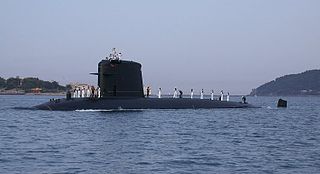
Saphir was a first-generation nuclear attack submarine of the French Navy. Saphir was the second of the Rubis series. The boat was originally to be named Bretagne, but the name was changed to Saphir before commissioning in 1981.

Casabianca was a Rubis-class nuclear attack submarine of the French Navy. Laid down in 1981, she was launched in 1984 and commissioned in 1987. She was withdrawn from service in September 2023.

Émeraude is a nuclear attack submarine from the first generation of attack submarines of the French Navy. Having been in service since 1988, she is scheduled to be retired in 2024.
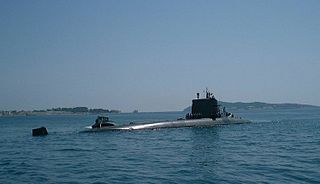
Perle is a first-generation nuclear attack submarine of the French Navy. The boat is the sixth and last of the Rubis series. Construction began on the submarine on 27 March 1987. The boat was launched on 22 September 1990 and entered active duty service on 7 July 1993.

The French Navy's modernization, as is the case with the Army and Air and Space Force, is pursued on the basis of successive 7-year Military Planning Laws. The latest LPM covers the 2024-2030 period and is tailored around four strategic priorities: the strengthening of deterrence assets; preparation for high-intensity warfare; protecting national interests in all French territories, shared spaces and key domains ; and finally, the strengthening of international partnerships.
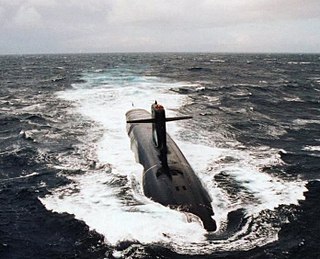
Le Triomphant is a strategic nuclear submarine of the French Navy; the submarine is the lead boat of her class commissioned in 1997 with the home port of Île Longue. The vessel carries sixteen strategic missiles, whose launch can only be authorized by the President of France.
Le Terrible is a Triomphant-class strategic nuclear submarine of the French Navy. The boat was launched on 21 March 2008

The Submarine Forces of France are one of the four main components of the French Navy. The force oversees all French submarines regardless of role.
The Type 216 is a submarine design concept announced by Howaldtswerke-Deutsche Werft based on the Type 212/214.
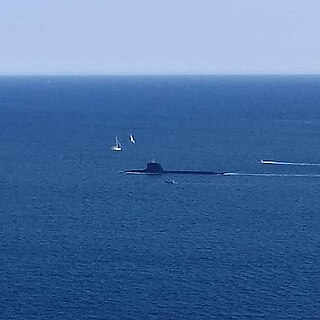
Suffren (Q284/S635) is a French nuclear attack submarine. It is the lead ship of the Suffren class, stemming from the Barracuda programme. The vessel was laid down on 19 December 2007 and launched on 1 August 2019 at Cherbourg. It was commissioned on 6 November 2020; while full operational service had originally been anticipated in 2021, this was pushed back into 2022 after further testing/trials by the French Navy. Pursuant to testing the submarine was then declared fully operational on 3 June 2022.
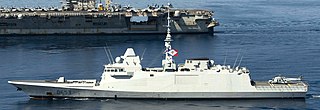
Languedoc (D653) is an Aquitaine-class frigate of the French Navy. The Aquitaine class were developed from the FREMM multipurpose frigate program.

The SNLE 3G is a class of submarines under development for the French Navy's nuclear deterrent, part of the Force de dissuasion. It is being designed as a replacement for the current Triomphant class beginning around 2035, and could remain in service to as late as 2090. Steel was cut on the first vessel in the class in March 2024.
The Missile de Croisière Naval (MdCN), meaning Naval Cruise Missile, is a French turbojet-powered subsonic cruise missile intended for ship and submarine-based land-attack operations. Originally dubbed SCALP Naval, the program arose out of a requirement issued by the French Ministry of Defence for a more potent cruise missile capable of striking strategic and military targets from extended stand-off ranges in order to complement the air-launched SCALP-EG/Storm Shadow.
Duguay-Trouin (S636) is a French nuclear attack submarine and the second boat of the Barracuda class. The vessel was laid down on 26 June 2009 and launched on 9 September 2022 at Cherbourg. It was commissioned on 28 July 2023.














